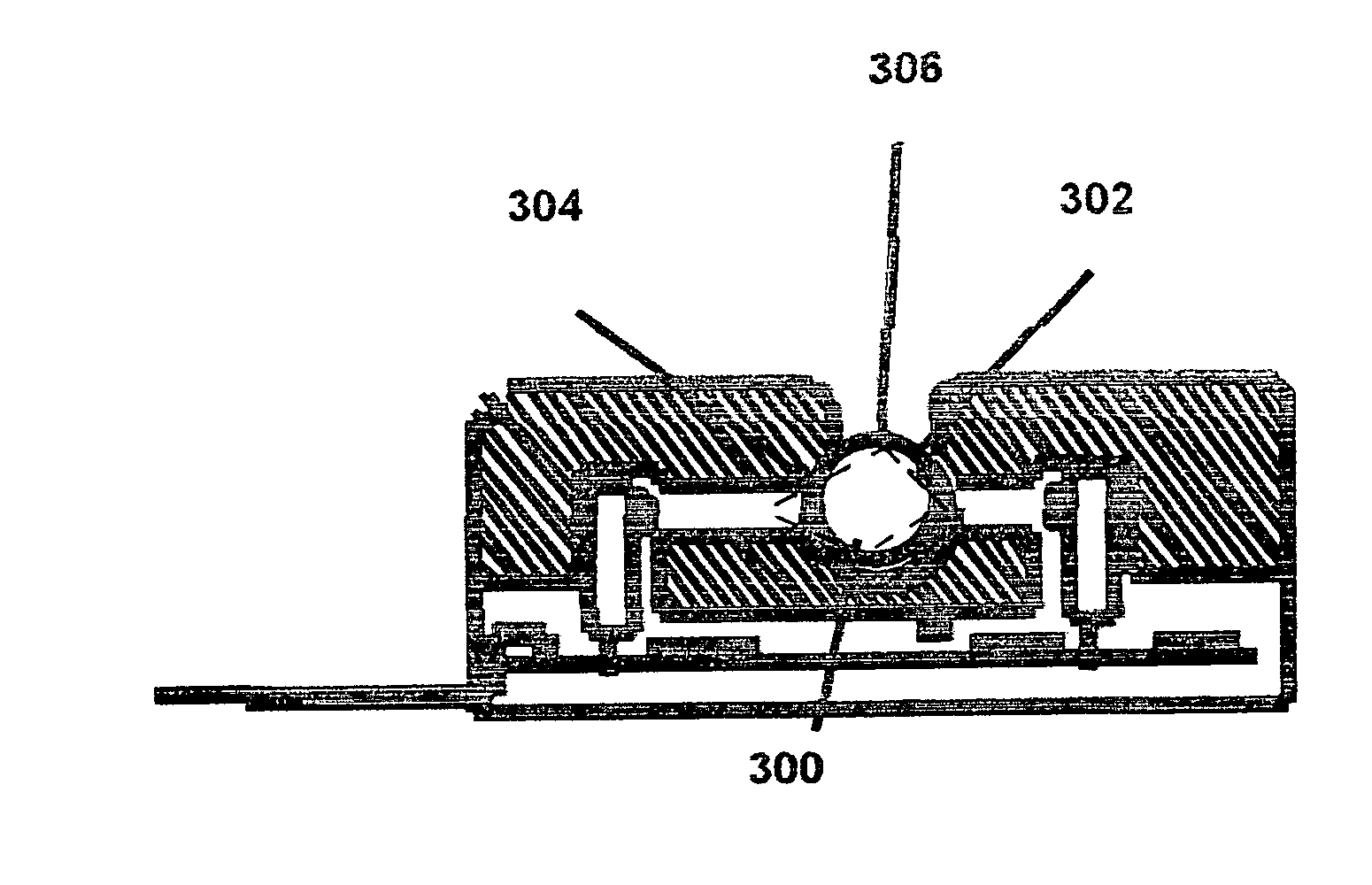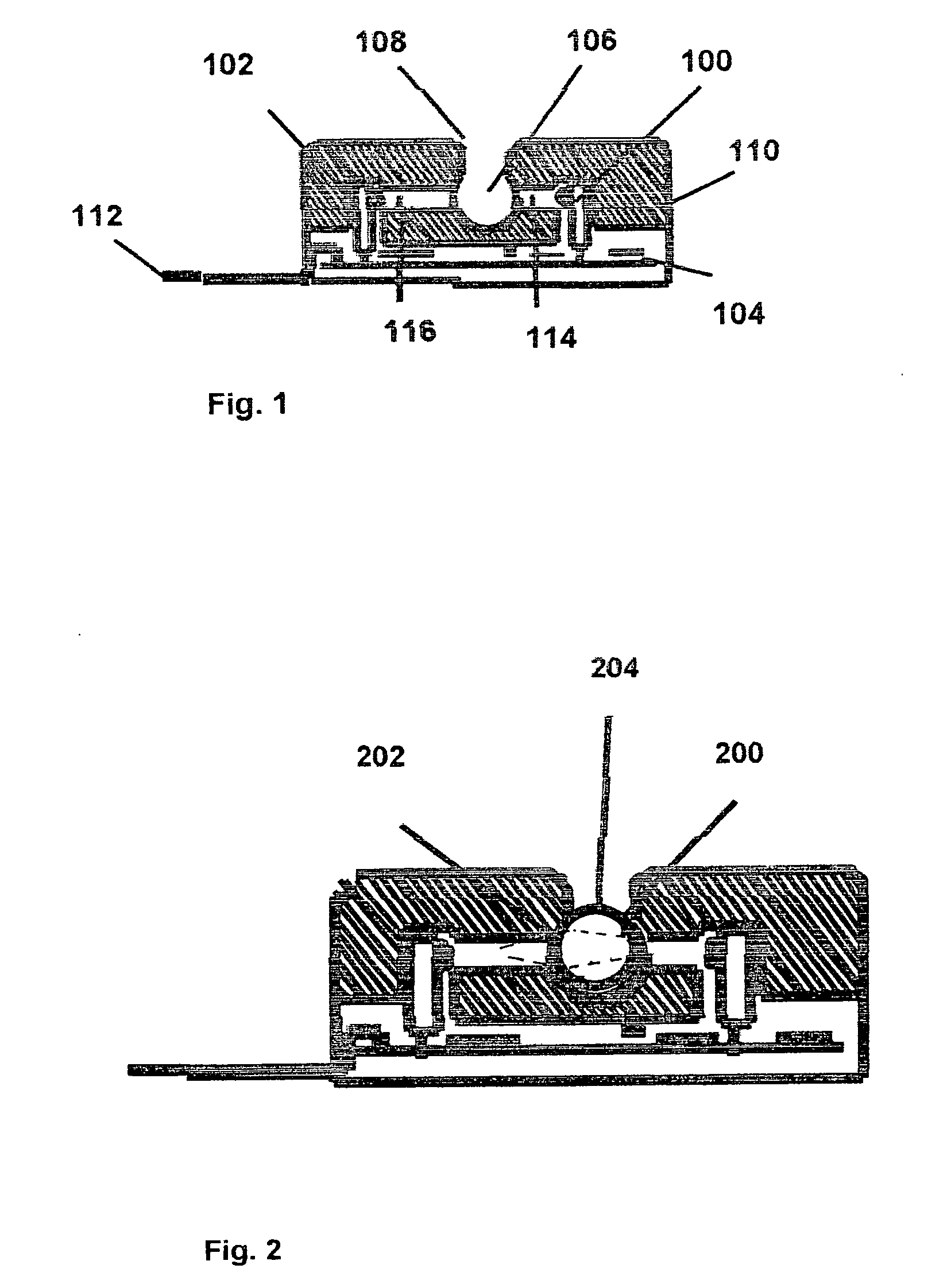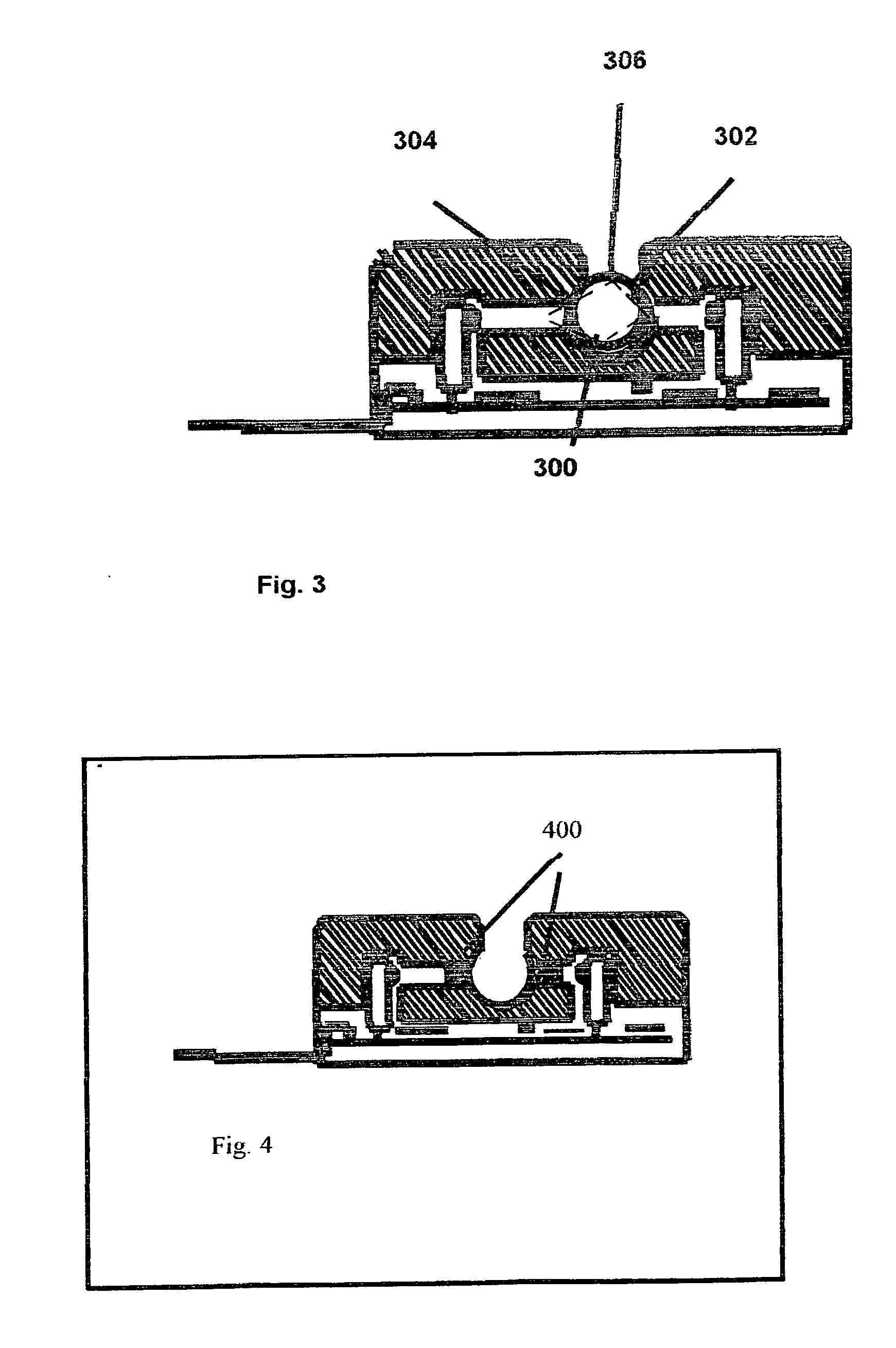Blood concentrate detector
a detector and blood concentrate technology, applied in the field of blood concentrate detectors, can solve the problems of frequent calibration, increased work and cost in the cleansing process between patients, and devices that cannot detect small concentrates of blood particles within dialysate solutions, so as to avoid alterations in the characteristics of the solution, minimize adverse effects on the sensor, and avoid calibration.
- Summary
- Abstract
- Description
- Claims
- Application Information
AI Technical Summary
Benefits of technology
Problems solved by technology
Method used
Image
Examples
Embodiment Construction
[0047]FIG. 1 shows a perspective view of the blood concentrate detector used in connection with intravenous tubing for extracorporeal treatment system whereas it is desirable to detect the malfunctioning of equipment and / or the misapplication of apparatus used in the medical treatment system. Such equipment malfunctions include, but are not limited to, pump stoppage, pump reverse, filter leakage, filter breakage, circulation interference, etc. Such misapplication of apparatus include, but are not limited to: intravenous tubing not properly inserted or pulled out of the tube cavity (e.g. nesting area, optical pathway); air in tubing due to fluid leakage, dispenser empty, etc.; intravenous tubing kinked; et. FIG. 5 depicts the various states that will manifest as a result of the various malfunctions and / or misapplications described. FIG. 1 depicts an optical system to detect these various states, by way of generating a light 100 and transmitting said light through an aperture 114, acr...
PUM
| Property | Measurement | Unit |
|---|---|---|
| wavelength | aaaaa | aaaaa |
| wavelength | aaaaa | aaaaa |
| diameter | aaaaa | aaaaa |
Abstract
Description
Claims
Application Information
 Login to View More
Login to View More - R&D
- Intellectual Property
- Life Sciences
- Materials
- Tech Scout
- Unparalleled Data Quality
- Higher Quality Content
- 60% Fewer Hallucinations
Browse by: Latest US Patents, China's latest patents, Technical Efficacy Thesaurus, Application Domain, Technology Topic, Popular Technical Reports.
© 2025 PatSnap. All rights reserved.Legal|Privacy policy|Modern Slavery Act Transparency Statement|Sitemap|About US| Contact US: help@patsnap.com



